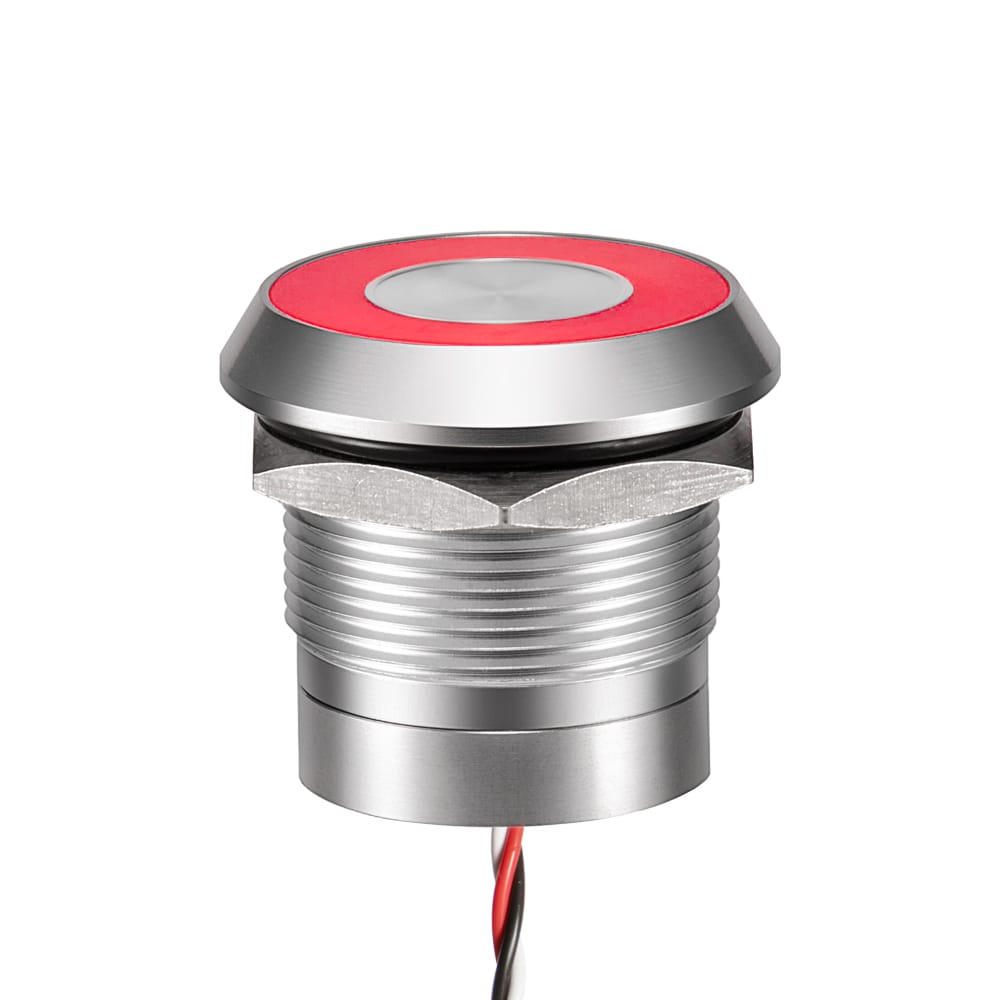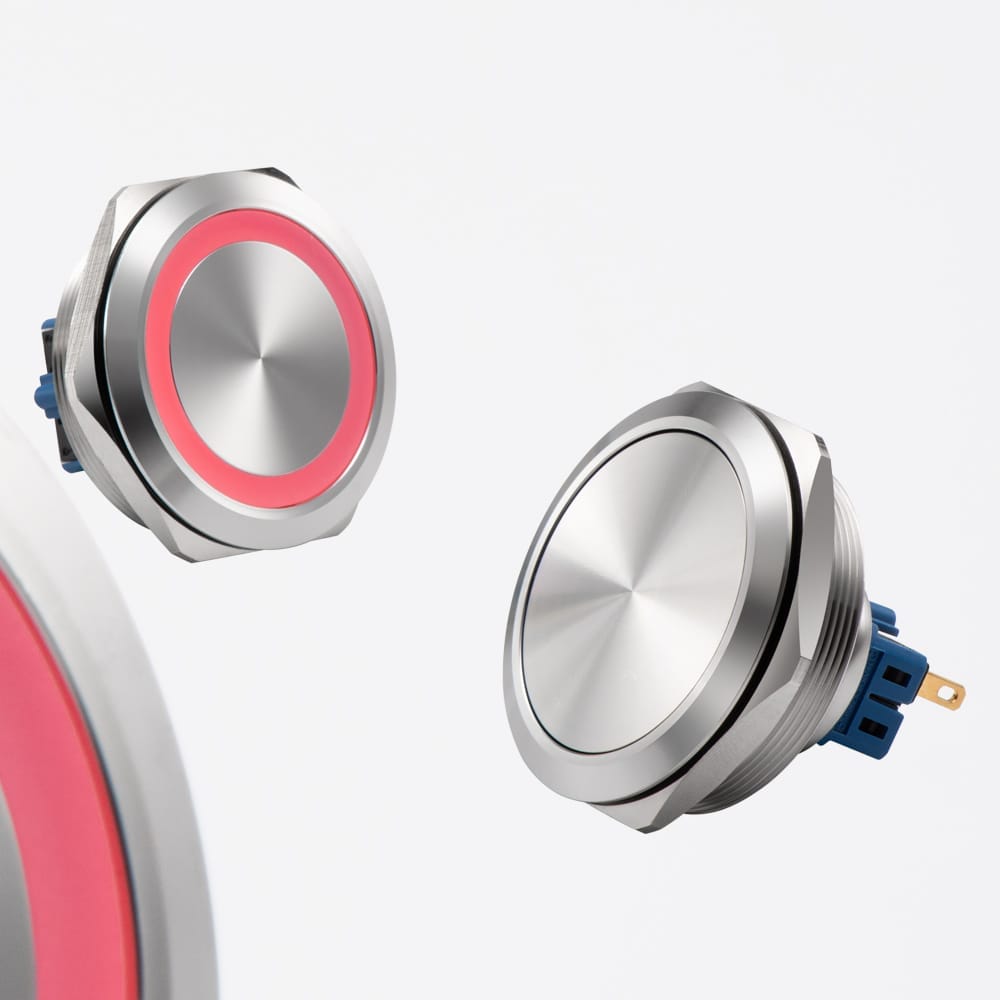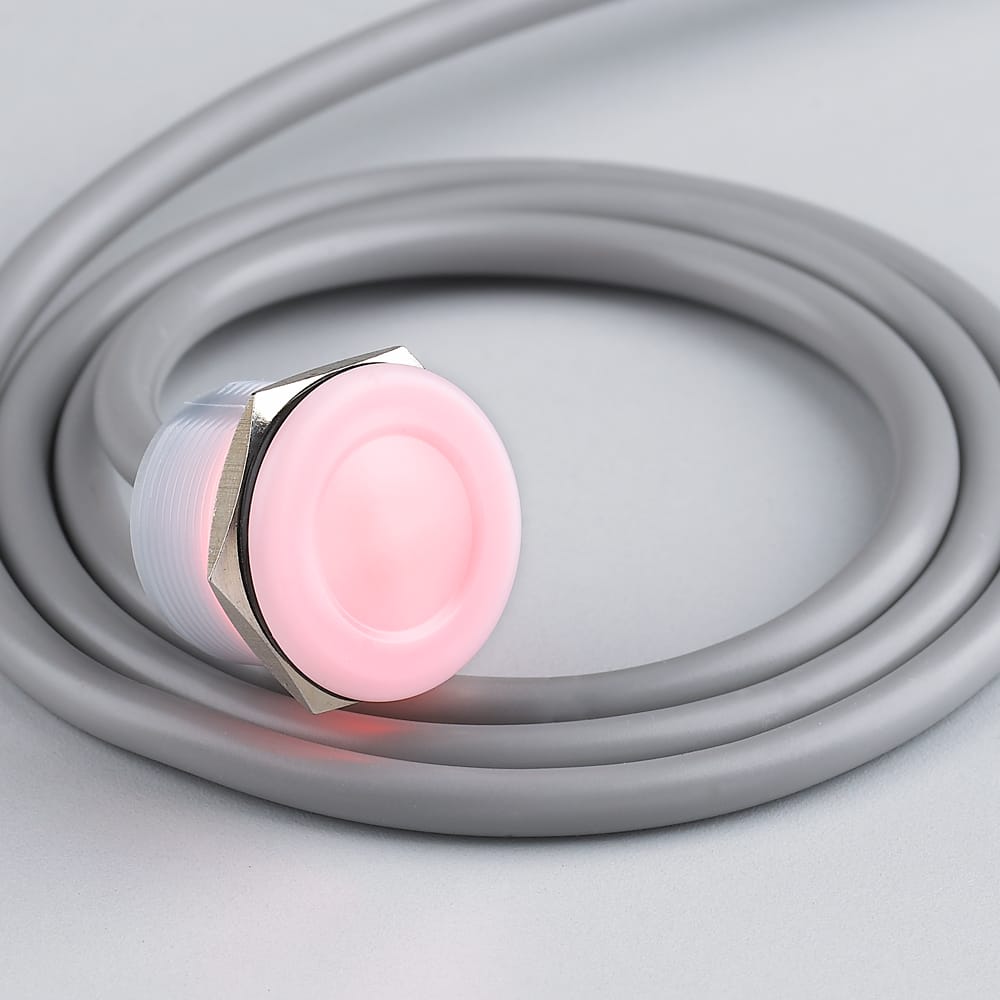
Switches are important components that control the flow of electricity in various devices and systems. Among the plethora of switches available in the market, push button switches are gaining traction for all the right reasons.
These switches are efficient and ensure better safety in electrical applications. So, whether it’s controlling home appliances or operating elevator buttons, push button switches are everywhere, ensuring convenience and reliability.
In this article, we are going to discuss push button switches, their types, applications, and much more. So, let’s dig in!
What is a Push Button Switch?
Typically, a push button switch is a type of electrical switch that controls an electric circuit with the press of a button. They are also known as momentary switches, and they feature durable metal or plastic material that easily withstands daily wear and tear. You’ll commonly see these switches in daily home appliances, such as for controlling lights and operating machinery in industrial settings.
How Does a Push Button Switch Work?
The components of a push button switch are given as:
- Actuator
- Internal spring
- Metal contacts
Now let’s discuss the working of this switch:
- When the actuator is pressed, the spring mechanism compresses, enabling the metal contacts to contact each other, completing the circuit. Now, current flows through the switch, smoothly operating various devices.
- However, as soon as you release the button or actuator, the spring mechanism inside the switch expands, pushing the metal contacts apart from each other. This breaks the circuit, turning a device off.
You should know that working can vary depending upon the category of the push button switch. If it’s a NO (normally open), then the switch completes the circuit when the button is pressed, allowing electricity to flow. But if it’s an NC (normally closed) switch, the circuit is completed when the button isn’t pressed. Pressing the button will open the circuit, interrupting the current flow.
Types of Push Button Switches
There are plenty of types of push button switches, and some of these are given as:
Based on Shape
The following are the types of push button switches based on their shapes:
Square push button switches are known for their unique large square-shaped button or actuator. They are widely used in industrial settings due to their large surface area.
Round push button switches are quite small in size and are known for their circular shape. They are commonly found in home appliances and consumer electronics due to their ergonomics and durability.
Based on Configuration
Here are different push button switch types based on their configuration:
A single pole single throw (SPST) push button switch is the most common type of switch featuring one pole and one throw. They are frequently used to disconnect or reconnect a single conductor in a single branch circuit.
Next, we have the single pole double throw, which has one pole and two throws or output terminals. It allows the switch to attain one of the output states to control multiple circuits.
Based on Functionality
Push button switches are divided into the following types based on their functionality:
Momentary switches, as the name suggests, remain active only as long as the actuator is pressed. Once the button is released, the circuit breaks, interrupting the current flow. Common examples of momentary push button switches include a doorbell or a buzzer bell.
Latching switches stay in a certain position once they are pressed until you press them again. This means that pressing the button once will change the switch state, and it’ll stay in that position until it is pressed again. The example of a latching push button switch is a typical on-and-off switch in your home.
The final type of push button switch on our list is the illuminated one. As the name suggests, these switches have a built-in power source, often an LED. This illumination provides visual feedback on the status of the switch and enhances visibility in low-light conditions.
Best Push Button Switch Options!
Let’s discuss the many types of push button switches you can trust for your applications!
19mm Piezo Switch
The 19mm Piezoelectric Switch is designed with a smooth, metal surface that is easy to clean, making it ideal for hygienic environments. It boasts an impressive lifespan, capable of enduring up to 50 million cycles.
This switch is available in two configurations: Single Pole Single Throw Normally Open (SPST N.O.) or Single Pole Single Throw Normally Closed (SPST N.C.), providing flexibility in its application. It generates a pulse duration of 125 to 300 milliseconds and operates efficiently within a 1 to 24V AC/DC voltage range.
The switch supports a switching current of either 0.2A or 1A. Additionally, it features optional ring or dot illumination for enhanced visibility. The best part of this switch is that it’s robustly built and sealed to IP68 or IP69K standards, ensuring it remains waterproof and dustproof.
22mm Capacitive Touch Sensor Switch
The next one on our list of best push button switches is the 22mm Capacitive Touch Sensor Switch. It operates merely with a touch of a finger and has IP68 and IP69K ratings that ensure reliable performance in every setting.
What truly sets this switch apart from other variants is its impact resistance rating of IK10, which allows it to withstand substantial force without any damage. The switches maintain optimal operation in temperatures ranging from -20°C to +65°C. Furthermore, there’s an easy-to-locate on/off indication via LED light that keeps you updated about the status of the switch.
Surprisingly, cleaning this switch is hassle-free, as it’s impervious to dust and dirt and resistant to harsh chemicals and contaminants. You’ll find it in two types: momentary and latching, and you can opt for the one that best suits your applications.
L40 Series Illuminated Anti-vandal Switch
The L40 Series Illuminated Anti-vandal Switch is an incredible push button switch built to withstand tough conditions attributed to its IP65 rating. It offers options for either dot or ring illumination, providing clear visibility and a modern look.
The switch is versatile and available in Single Pole Double Throw (SPDT) or Double Pole Double Throw (DPDT) configurations. But that’s not all – this switch also offers multiple illumination voltage options that make it compatible with different electric systems.
Plastic Piezo Switch
The last and definitely not least option on our list is the Plastic Piezo Switch. This switch features a 25mm diameter actuator and fits into a 22.2mm diameter mounting hole.
It typically works as a normally open momentary switch, generating a pulse lasting 125-300 milliseconds when pressed. Overall, the switch has a recess for added ergonomics and functionality, while it has wire termination for connections.
It doesn’t matter the temperature, as the switch works reliably in temperatures ranging from -20°C to +70°C. It is sealed to IP68 standards, enabling it to work in challenging environmental conditions. The switch is available in 12V and 24V LED light options for different applications.
Benefits of Push Button Switches
The benefits of push button switches are plenty, and some of these are given:
Push button switches are incredibly user-friendly, requiring just a press of a button for activation. In addition, they don’t require any complex installation, making them suitable for people of all ages and abilities.
The durability of push button actuators is on the next level. They are constructed with durable material and are built to last millions of cycles. This reliability ensures long-term stability, eliminates the need for quick replacements, and saves you money in the long run.
Push buttons are extremely safe. Yes, it’s true! These switches are far away from the risk of accidental activation that may pose a risk to the integrity of your expensive industrial machinery. Not only this, but almost all switches come with an IP rating for dust and water resistance, which protects them against these elements.
These switches are also very versatile and available in various types and configurations, ranging from illuminated push-button switches to NO or NC switches. You can easily use them for simple on/off controls to complex multi-function devices without worrying about compatibility issues.
Applications of Push Button Switches
Due to their abundant benefits, push button switches find applications in various industries. Some of these are discussed below:
Push button switches find applications in home appliances such as microwaves, washing machines, and coffee makers. They provide a convenient way to start and stop the appliances and help you select various modes.
In industrial settings, push button switches are important in various machinery or equipment operations. For instance, they are useful in controlling processes, starting and stopping a machine, and also serve as emergency stop buttons.
Automotive systems like ignition, horn activation, and control panels rely on push button switches. They allow you to control various functions within vehicles, offering convenience and safety.
Consumer electronics like smartphones, calculators, and gaming consoles also use these switches to control electronic functions and enhance the overall user experience.
Elevator controls are one of the most common and major applications of push buttons or momentary switches. Users can use them to select floors and open and close a door with a single press.
Medical devices such as patient monitoring systems, diagnostic equipment, and surgical tools also use push button actuators. This is due to the reliability and durability of these switches, which offer accurate and dependable performance.
Push buttons or momentary switches are also used in security systems to activate alarms, control access points, and operate surveillance equipment.
Tips to Choose the Best Push Button Switch
If you are finding it difficult to choose the best push button switch for your applications, take the following factors into account to make a wise decision:
- Type of Switch: First, consider the type of push button you want. Determine whether it should be a momentary or latching switch, and also pay attention to the switch configuration, such as Single Pole Single Throw (SPST) or Double Pole Double Throw (DPDT), to ensure the switch meets your functional requirements.
- Cost: Carefully evaluate the cost of the switch you are considering. Balance cost with quality and functionality to get a switch that’s not heavy on your budget.
- Durability: Check the durability of the push button switch, especially if it’s going to be used in harsh environments. Look for features such as maximum life cycles and IP ratings to ensure reliable performance and longevity.
Don’t forget to look for the available customization options and whether the switch comes with illumination. These things can significantly improve the user experience and provide visibility in a low-light environment.
FAQs
What are tactile push button switches?
Tactile push button switches provide tactile feedback when pressed, informing users that the switch has been activated. They commonly find applications in keyboards, remote controls, and other electronic devices.
What are the cons of push button switches?
While push button actuators offer numerous benefits, they also have some disadvantages. These switches are only suitable for simple on/off operation and don’t cater to complex requirements. In addition, they only carry low to moderate level current and may not be suitable for high-voltage and high-current applications.
What is a double-headed push button?
A double-headed push button features two actuators or buttons mounted side by side on a single housing. Each button can be pressed independently of the other and performs a specific function. They are suitable for various industrial and control applications, such as emergency systems.
Conclusion
Push-button switches are simple yet popular switch types known for their durability, versatility, and ease of use. They find applications in consumer electronics, medical devices, industrial machinery, and elevator controls. If you are wondering where to get top-quality push-button actuators for your needs, Langir has you covered.
We offer a variety of push-button or momentary switches, including the L40 Series Illuminated Anti-vandal Switch, Plastic Piezo Switch, and many more, that are affordable and durable. Contact us today to explore our wide variety of push-button switches and pave the way for efficiency and reliability!
Send your inquiry now
All Langier News:
Read Moreelectronica 2024 Hall-Stand No.: A2 160 November 12-15, 2024 Tr...

 English
English 简体中文
简体中文









